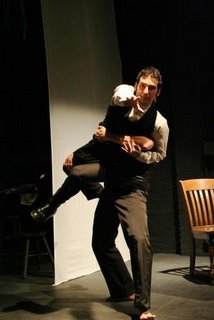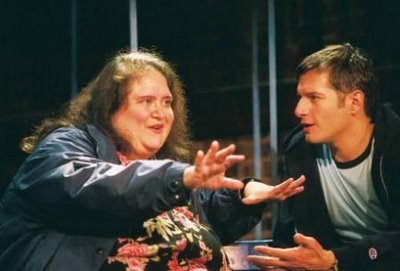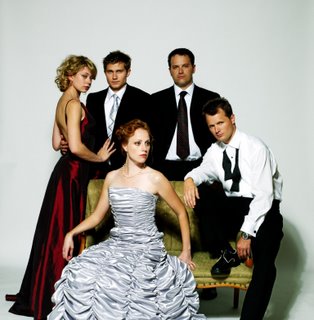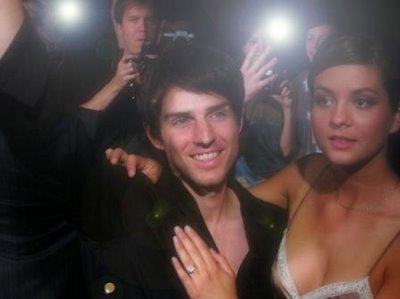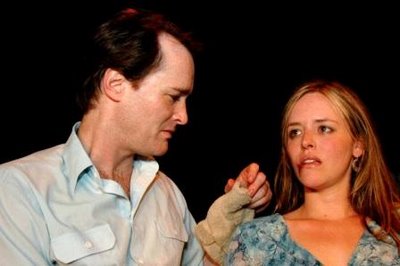Never Missed a Day has a solid message about the way we balance work and play (or in this case, drown the latter with the former), but it's a story written in bluntness: at times it is literally all work, and no play.
Reviewed by Aaron Riccio
I’d like to say that WorkShop Theater Company’s new show Never Missed a Day never misses a beat, because underneath the awkward pauses and “monolongs” (monologues that go on and on), Ken Jaworowski has written a decent show. And underneath their tics and too-rapt glares (where an actor tries too hard to let the audience know he’s listening), the actors have made a believable connection to their pathetic, self-deceiving office drones. It’s a testament to the truth of the material that even when the pace is so slow you can see a trail of slime, you’re still empathizing (even as your eyelids droop).
The thematic comparisons to Mamet’s classic Glengary Glenross come easy, but that’s the same for any show that bemoans the abuses of an office. But whereas Mamet’s play was filled with action and scheming, Jaworowski is stuck on one note, and in one location: the whole build is whether or not the retiring Deuce will finally tell off his boss, “the bowtie,” after forty-three years of suffering. This narrative structure is tragically indebted to the worst of Eugene O’Neill: the characters are solipsistic and soft, as opposed to Mamet, where they’re at least arrogant enough to be self-centered and slick.
At least the five characters—whether they’re playing a type or not—are different from one another. Though they’re often left sitting in “forget-about-me” silence while one character drones on, you generally believe that they are who they are. But the play makes its point by making the interior and the exterior into pathos: the characters don’t have charisma, and the actors and scenes are all the more dismal for it. Deuce’s final speech is a proselytizing breakdown of all the lies these characters have been feeding us for the last ninety minutes, but Deuce is one of those characters too and his warnings are as rambling and listless as most of the play.
The few lively moments are the intermittent anecdotes or jokes that capture the essence of office life. Director Thomas Coté capitalizes on them when he can, but given the confines of a dull, ill-lit back room of a local bar, we see it more as Coté clinging desperately to the funny bits before his capsized scenes go underwater again. Never Missed a Day isn’t a bad play; but if you missed it, it wouldn’t be the end of the world either.
The Workshop Theater (312 W 36th Street)
Tickets (212-352-3101): $18.00
Monday, Wednesday-Saturday @ 8:00



